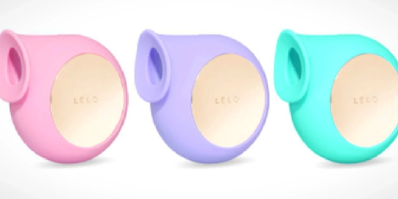Do All Lesbians Scissor? Busting the Biggest Myth About Lesbian Sex Positions in 2025

When you picture two women getting intimate, does your mind jump straight to that classic scissoring position—vulvas grinding in perfect sync like something out of a steamy flick? You're not alone; this idea has seeped into pop culture, making many assume it's the go-to move for every lesbian encounter. But is scissoring really a staple in all lesbian sex, or is it just one overhyped option among many? As someone who's chatted with countless readers exploring their desires, I'll say this: The truth is way more nuanced. Let's unpack the scissoring myth, dive into what it actually involves, and explore why not every queer woman (or couple) is on board. If you're curious about lesbian sex myths, common lesbian positions, or how porn shapes our views, stick around—this could clear up some misconceptions and spark fresh ideas for your own adventures.
What Exactly Is Scissoring, Anyway?

At its core, scissoring (sometimes called tribbing) is a sex position where two partners intertwine their legs, aligning their genitals to rub against each other for clitoral stimulation. Heads point in opposite directions, creating that rhythmic, skin-on-skin friction that can feel electric. The appeal? It's hands-free, intimate, and focuses on mutual pleasure without needing toys or penetration. Done right, it can lead to intense orgasms, blending physical closeness with emotional connection.
But here's where the myth kicks in: Not every body loves it, and it's far from a one-size-fits-all essential. Scissoring requires flexibility, the right angles, and compatible anatomies—think front-facing vulvas for easier contact. For many, it's a fun add-on, not the main event.
The Reality: Scissoring Isn't for Everyone—And That's Totally Fine

Porn might make it look effortless, but real life tells a different story. A 2015 survey of LGBTQ+ folks found that only about 40.7% regularly include scissoring in their routines—hardly the universal must-have it's cracked up to be. Why the gap? Bodies vary wildly. Plus-size partners or those with mobility issues might find it awkward or exhausting, opting instead for side-by-side grinding or other creative twists.
Psychologists note that while it can amp up arousal through clitoral focus and eye contact, preferences differ. Some crave the psychological thrill of vulnerability, but others skip it altogether for oral, fingering, or strap-ons. The key takeaway? Lesbian sex isn't defined by one move—it's about what feels good for you and your partner.
Body Differences Play a Huge Role in Lesbian Sex Positions
No two vulvas are alike, and that impacts everything. Women with forward-tilted anatomy might thrive on scissoring's direct rub, hitting pleasure spots with ease. But for others—say, those with a backward tilt or varying sizes—it's a miss, leading to frustration rather than fireworks. Add in factors like height mismatches or joint stiffness, and it's clear why scissoring isn't everyone's jam. Instead, many turn to alternatives like the "lazy scissors" (less leg-locking, more chill) or non-penetrative options that prioritize comfort and connection.
Porn's Influence: How Media Fuels the Scissoring Myth
Blame it on the screen—mainstream porn loves dramatizing scissoring as the pinnacle of girl-on-girl action, often for the male gaze. But queer communities call foul: It's flashy for viewers, not always practical or preferred in real bedrooms. Extensive adult sites push this trope, but surveys show it's not reflective of everyday lesbian intimacy. The result? Misguided assumptions that box in diverse experiences, ignoring the spectrum of lesbian sex positions like 69, face-sitting, or mutual masturbation.
Limited Sex Ed Leaves Gaps in Understanding

Here's a stat that'll make you pause: Only 8.2% of U.S. students in grades 6-12 get inclusive LGBTQ+ sex education, per the 2019 National School Climate Survey. That means most folks learn from media or myths, perpetuating ideas like "all lesbians scissor." Better education could highlight variety, reducing stigma and empowering exploration.
The Bottom Line: Scissoring Is Optional, Not Obligatory

Scissoring can be a thrilling addition for some, offering that raw, body-on-body spark. But it's no requirement for mind-blowing lesbian sex—far from it. Whether you're debunking myths for yourself or a partner, remember: Pleasure comes in endless forms. Curious about more lesbian sex myths or tips for trying scissoring safely? Drop a comment—we're all about open chats. For deeper dives into queer intimacy and positions, explore our truth-or-myth series. Ready to experiment? Prioritize consent, lube, and fun!




![[For Women] Two Lesbian Teens Strapon in Pink Pantyhose](https://cdn.xmonter.com/x/thumb/496_280_fit/e725736a30a62b315334b69365727c83.webp)


![[For Women] Rebeka Ruby First Lesbian VR Video Eats Pussy And Uses Toys 3D](https://cdn.xmonter.com/x/thumb/496_280_fit/6eb1b5471f7c0a63258825ff8a211ad8.webp)











